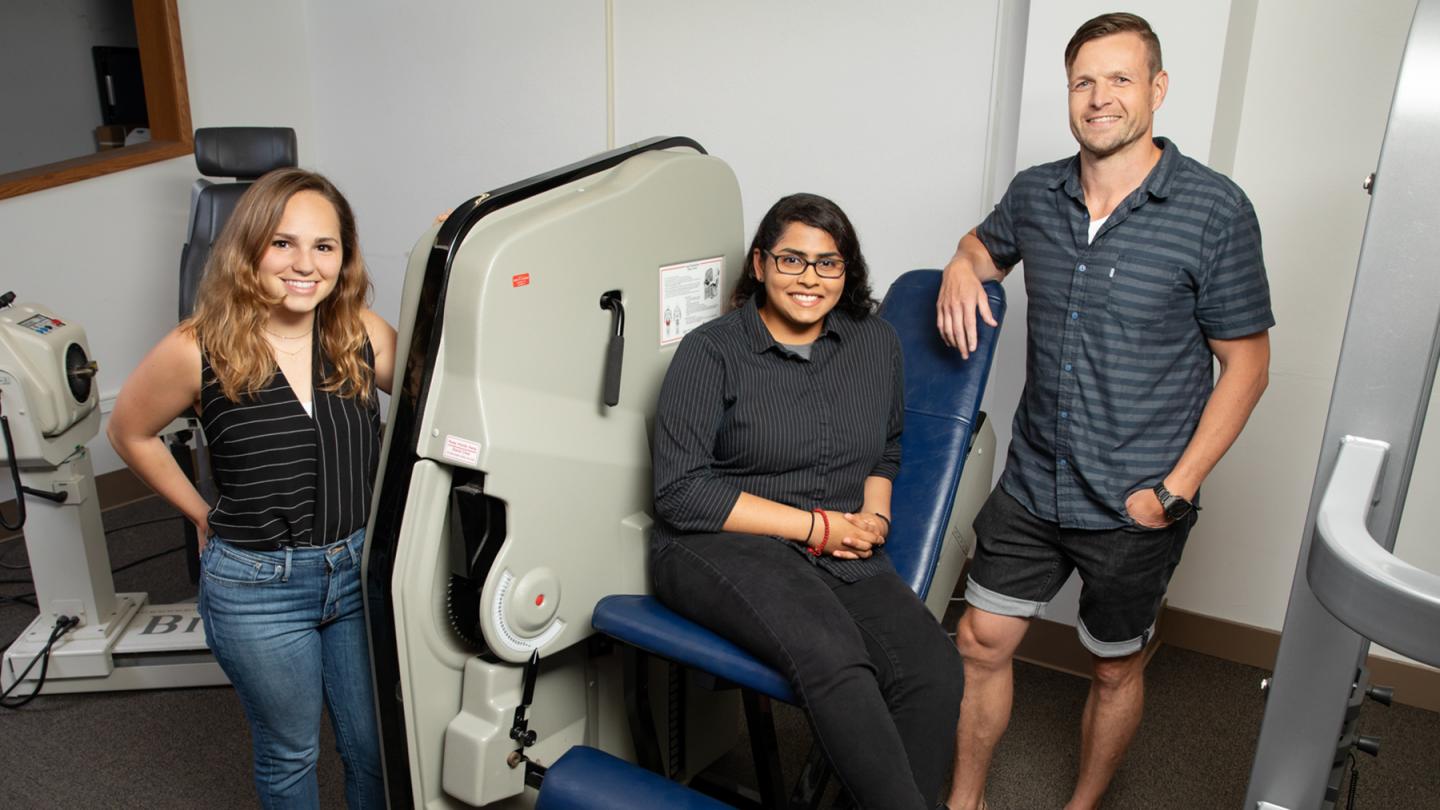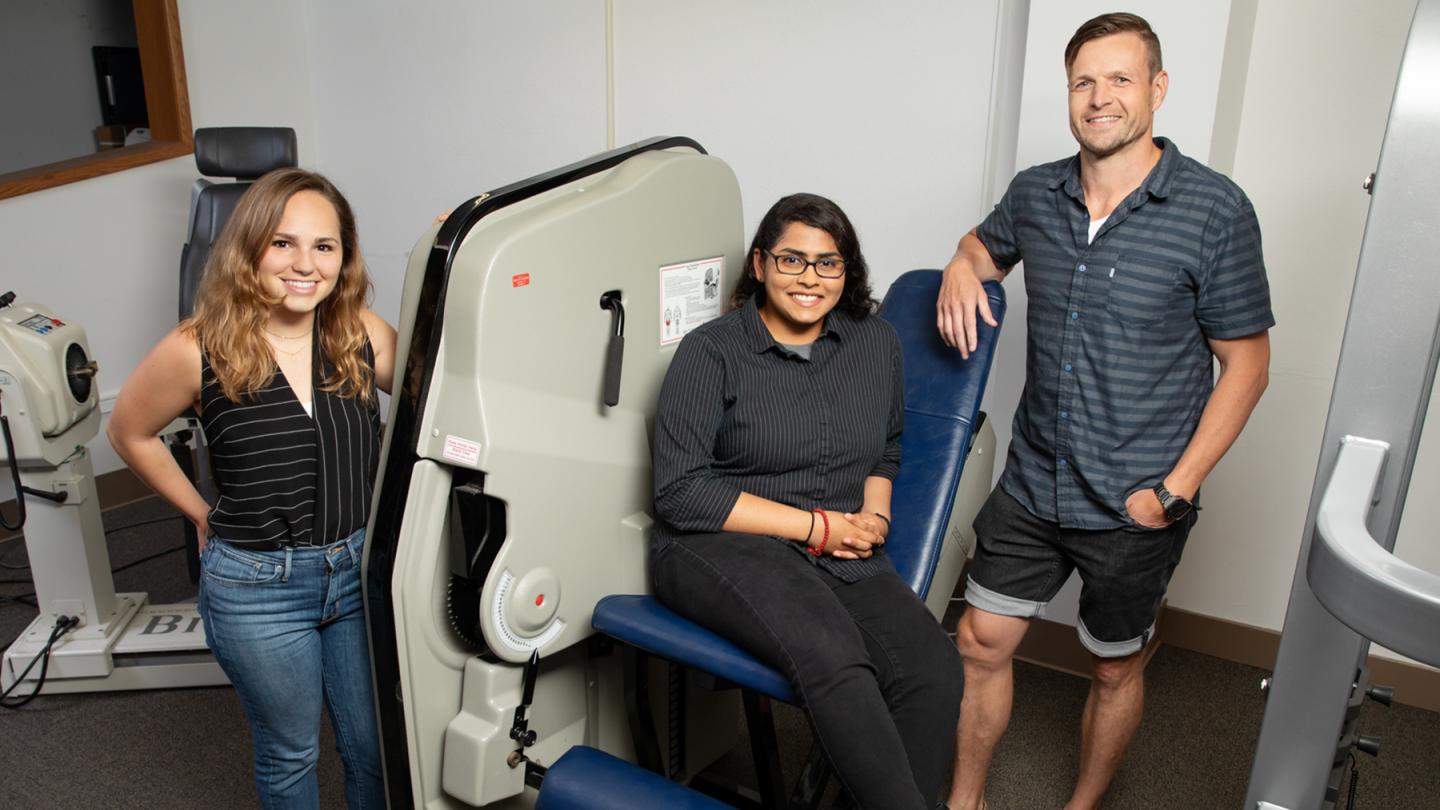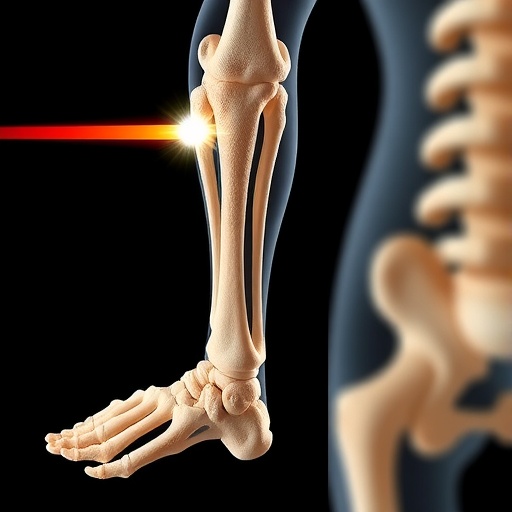
Credit: L. Brian Stauffer
CHAMPAIGN, Ill. — Obesity is associated with a host of health problems, including heart disease, type 2 diabetes and high blood pressure. According to a new study reported in the Journal of Physiology, obesity also diminishes a person's ability to build muscle after engaging in resistance exercise.
"Several previous studies, including some from our lab, have shown reductions in muscle protein synthesis after food ingestion in obese adults compared with normal-weight adults," said University of Illinois kinesiology and community health professor Nicholas Burd, who led the new research with division of nutritional sciences graduate student Joseph Beals. "Our new study goes further, showing there is an obesity-related impairment in building new muscle proteins in the fed state after a weightlifting session."
Beals and his colleagues recruited nine obese and nine normal-weight 20- to 23-year-old adults for the new study. The participants, who did not engage in a regular exercise program, took a couple of standardized health surveys and were deemed healthy but "insufficiently active" prior to enrollment in the study.
After assessing participants' body composition, glucose tolerance and ability to engage in a weighted leg extension exercise, the researchers began infusions of stable-isotope-labeled phenylalanine in all study subjects. This allowed the team to monitor amino acid levels in participants' blood and muscles throughout the experiment.
The team took muscle biopsies from one leg of each of the study subjects, who then performed four sets of 10-12 repetitions of the resistance exercise with the opposite leg.
This weightlifting protocol is more demanding than most current exercise recommendations, Burd said.
Immediately after the exercise, subjects consumed 170 grams of lean ground pork, which amounted to 36 grams of protein and 4 grams of fat. Researchers then collected additional muscle biopsies from the exercised and inactive legs at 120 and 300 minutes after pork ingestion.
"By using participants' own nonexercised legs as controls in the experiment, we were able to directly compare how weightlifting affects muscles' ability to build new proteins versus a nonexercised state," Burd said.
As expected, there were notable differences between the obese and normal-weight participants before the experiments began, Burd said.
"The obese adults had plasma insulin concentrations that were approximately 3.2 times higher at baseline, which highlights some level of whole-body insulin resistance," he said. "Given that obesity is associated with increased muscle mass, but of poorer metabolic quality, the amount of work they could perform per unit of lean muscle mass also was lower than that of their normal-weight peers."
Further differences between the normal-weight and obese adults appeared after the exercise and ingestion of protein-dense food. The most important of these involved rates of protein synthesis in myofibrillar proteins, the muscle proteins that generate force and allow muscles to grow bigger in response to exercise.
Rates of myofibrillar protein synthesis increased in both legs in all participants after pork ingestion, the researchers found. But the expected boost in protein synthesis in the exercised legs was more robust in the normal-weight adults than in their obese peers.
"We show that post-workout muscle building and repair is blunted in young adults with obesity," Burd said. "This is significant because muscle building and repair after exercise has long-term implications for metabolic health and overall physical performance."
###
The American College of Sports Medicine Foundation supported this research.
Editor's notes: To reach Nicholas Burd, call 217-333-2461; email [email protected].
The paper "Altered anabolic signaling and reduced stimulation of myofibrillar protein synthesis after feeding and resistance exercise in people with obesity" is available online and from the U. of I. News Bureau.
Media Contact
Diana Yates
[email protected]
217-333-5802
@NewsAtIllinois
http://www.illinois.edu
Original Source
https://news.illinois.edu/view/6367/687819 http://dx.doi.org/10.1113/JP276210





